Laptop Mag Verdict
The Meta Quest 3 brings a sleeker design, more powerful CPU and more memory for seamless virtual and mixed reality experience. Best of all, it's under $1,000.
Pros
- +
Sleek, lightweight design
- +
Full-color passthrough mode
- +
Large library of games
- +
Great audio
- +
Powerful, seamless virtual and mixed reality experiences
Cons
- -
More expensive than the Quest 2
- -
Same battery life as the Quest 2
Why you can trust Laptop Mag
In the past year, we've seen exorbitantly expensive mixed-reality headsets enter the industry, much to the shock and chagrin of tech enthusiasts and their wallets. First came the Meta Quest Pro with its initial $1,500 price tag, which quickly dropped to $1,000. Then came the Apple Vision Pro headset. Set to launch some time in 2024, it's priced at a jaw-dropping $3,500.
Something has to give – enter the Meta Quest 3. Priced at $499 to start, the nascent headset eclipses its predecessor by leaps and bounds. The first headset to sport Qualcomm’s Snapdragon XR2 Gen 2 platform it's more powerful than its predecessor. The Quest 3 also brings better haptics and lenses to the table, in addition to the new color Passthrough mode and high resolution display that helps bring the mixed-reality magic to life.
I had the opportunity to go hands on with the Meta Quest 3 and here are my first impressions.
Meta Quest 3 pricing and availability
The rumored price hike for the Meta Quest 3 has been confirmed, but compared to the Apple Vision Pro ($3,500) and even the Meta Quest Pro ($1,000), Meta’s latest headset is a steal. The base model of the headset has 128GB of onboard storage with 8GB of RAM and costs $499.99 (£479.99) while the 512GB model retails for $649.99 (£619.99). Each iteration cost hundreds more than the $299 Meta Quest 2, but in the grand scheme of things, it’s better than paying $1,000 or more. Both models are currently available for preorder with a ship date of October 10.
VR/MR enthusiasts that go with the 128GB model will also get a free copy of Asgard’s Wrath 2, a highly anticipated VR game title. Consumers that purchase the 512GB version get the game and a six-month subscription to Meta Quest + which gives you access to two titles handpicked by the Meta Quest team a month.
Meta Quest 3 design
Where laptop and smartphone design can feel a bit stagnant at times, VR headsets tend to buck the trend. I definitely wasn’t expecting to see a trio of black glossy oblong sensors gracing the front of the otherwise white plastic faceplate. It’s an appropriately sci-fi look. You’ll find a long, ovular volume rocker, a trio of magnetic charging connectors and a lens distance adjustment wheel which allows for a sharper image via the IPD (Interpupillary Distance) range of 53mm-75mm.
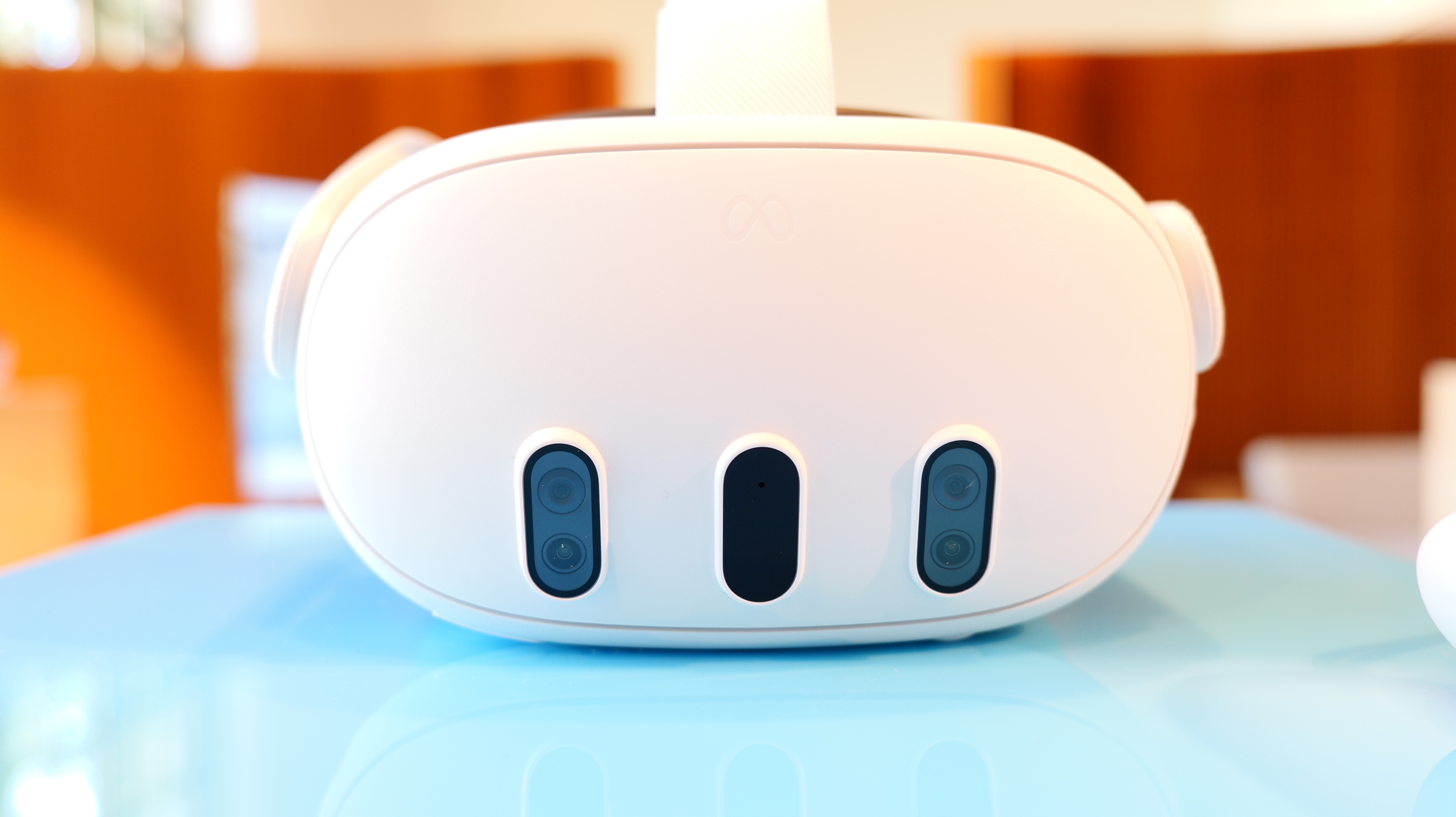
The white plastic faceplate gives way to black matte rubber covering comfy memory foam that sits around your eye area that houses a pair of lenses with a new pancake design (more on that later). A white fabric vertical head strap wraps along the sides of the faceplate secured by a white headphone jack on the right and the USB-C charging port with the power button just below on the left. A set of smaller straps in the back lets wearers adjust the length of the main strap for a better fit. A top-mounted head strap extends from the top of the headset and connects with the horizontal strap.
Sign up to receive The Snapshot, a free special dispatch from Laptop Mag, in your inbox.
The Meta Quest 3 weighs 18.1 ounces and measures 7.2 x 2.4 x 3.9 inches which is slightly heavier, but smaller than the Quest 2 (17.4 ounces, 7.5 x 5.6 x 4 inches). The Quest Pro (10.4 x 5 x 7.7 inches) is definitely the heavyweight in this situation at a hefty 25.4 ounces.
Meta Quest 3 comfort
I wore the Quest 3 for a couple of hours, 2.5 to be exact. And besides getting sweaty working out in Les Mills Body Combat, I can say that the headset felt very comfortable throughout the experience. The face mask portion of the Quest 3 sat snugly against my face courtesy of the soft bands holding it place. Best of all, I didn’t have that muggy, humid feeling that I’ve experienced with other headsets, especially when playing through more taxing games.

The adjustable horizontal strap along the sides of the Quest 3 has a set of smaller bands. Pull them apart to shorten the strap with the opposite action lengthening the strap. The top strap can also be adjusted and basically acts as a stabilizer.
I wish I had one of my more elaborate hairstyles to put the headset to the test as it handled my high-mounted skinny ponytail with ease.
Meta Quest 3 controllers
Meta decided not to put a ring on it this time. Whereas previous iterations of the Meta Quest controllers had a prominent ring to assist with tracking, the Quest 3’s Touch Plus controllers don’t. Instead, the 4.4-ounce, 4.96 x 2.6 x 1.69-inch input devices bring enhanced haptics that Meta promises will deliver “improved sensations and ergonomics.”
Although the ring has been put out to pasture, the Touch Plus controllers retain the buttons and trigger placements of its ancestors. That means you’ll still find the menu, X and Y buttons on the left controller and the Oculus (Home), A and B buttons on the right. Both controllers sport a single analog stick, a side bumper and a back trigger. The Touch Plus controllers also retain the slight slope from the Quest Pro’s controllers.
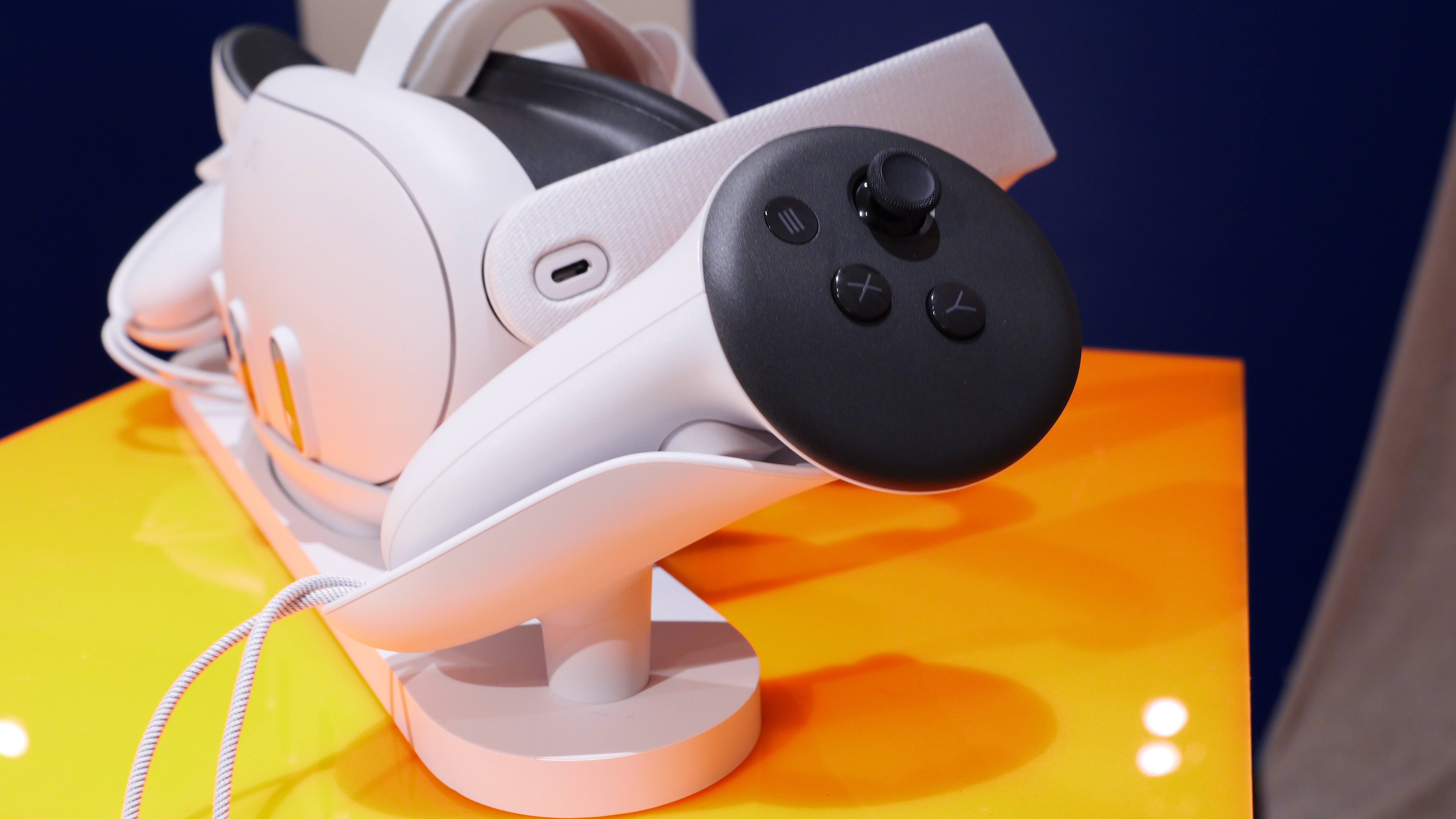
But ditching the ring isn’t the only change the white and black matte plastic Touch controllers bring to the arena. Some Quest 2 and Pro users complained about the magnetic battery covers flying off during more rigorous sessions. This time around, the covers are detached via a small button along the stem of the Touch Plus controllers. And while you’re swapping out the batteries, you can also switch the lanyards, a first for Meta.
In case you’re wondering, the Meta Quest 3 matches the Quest 2’s Touch controllers (3.5 x 4.7 inches) in weight, but has a larger footprint. However, the Quest Pro’s controllers, like their corresponding headset, are larger and heavier at 5.4 ounces, 5.1 x 2.8 x 2.4 inches.
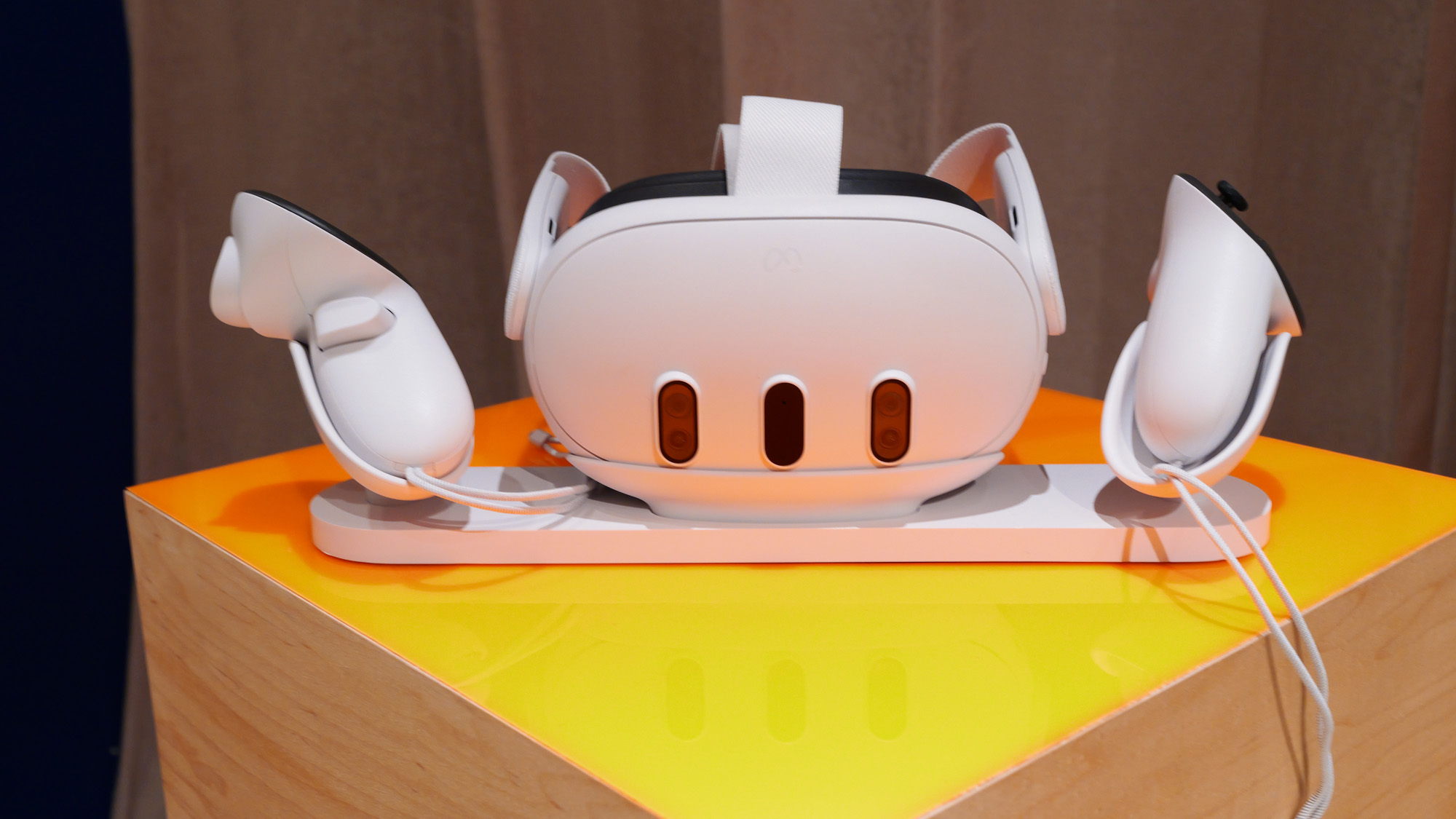
Want to get more hands on with your VR/MR experience? You can ditch the controllers and just use your hands using the Direct Touch hand-tracking technology. You can also use a few voice commands with the Quest 3. I didn’t have the opportunity to test either feature, but I’m definitely looking forward to utilizing all three in the near future.
Meta Quest 3 setup
Remember the setup for past Quest headsets? Clearing out a rather large space, putting the controller on the ground to establish where the floor is, picking it back up and tracing out a play space and hoping it was large enough to do freestanding VR? It wasn’t a bad experience, but for those of us with limited space, it could be a drag. Also, who wants to do a modified hokey pokey to set up a device? No one, that’s who.
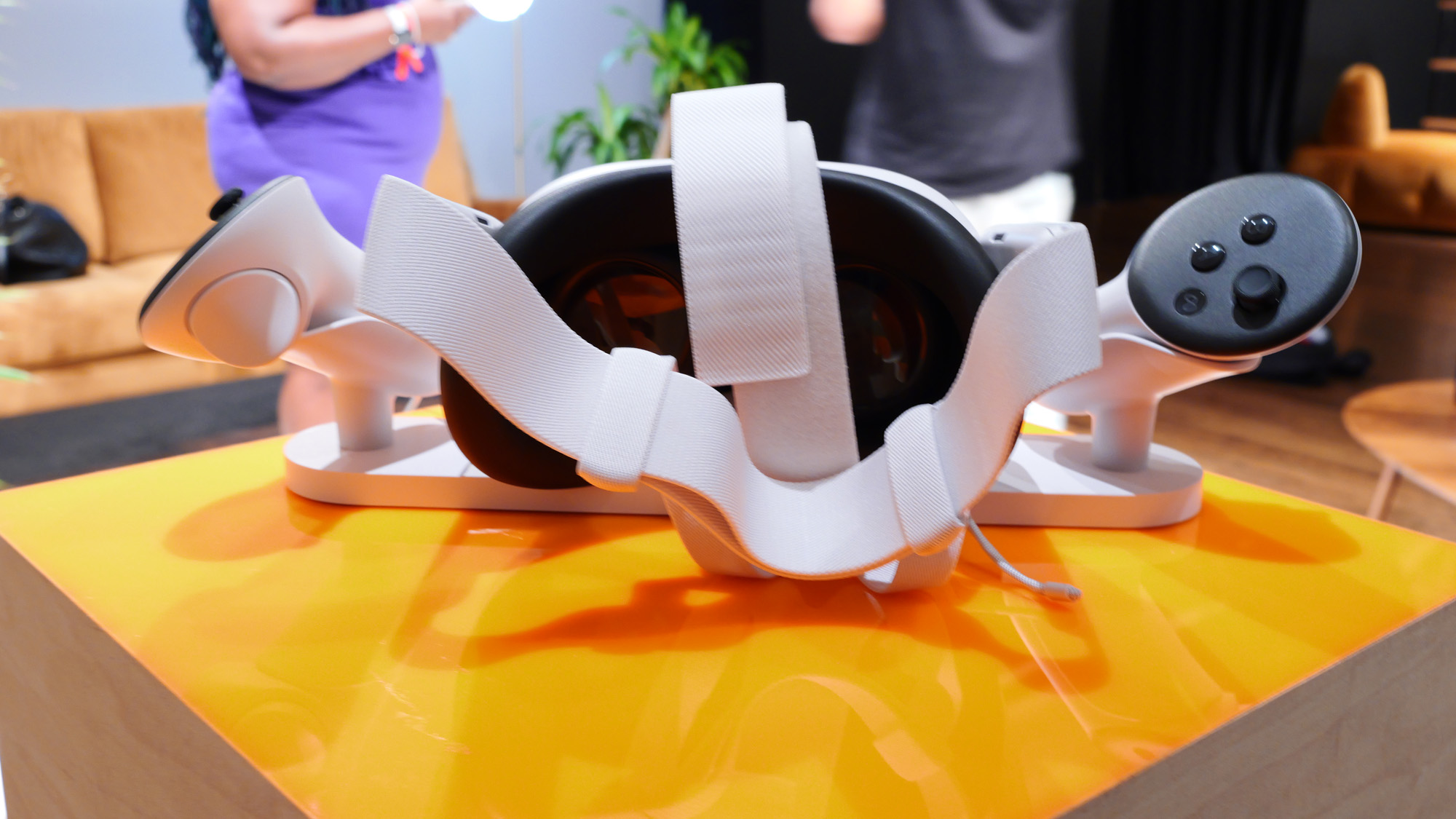
Meta and its upgraded sensors (more on that in a few) are paving the way to a faster, seamless set up. All I had to do to establish my play space was look around. No seriously. I just looked down and the floor boundary was established. From there, I looked around and Meta’s updated boundary feature automatically scanned my living room using computer vision to establish the boundary. It scanned the room in 3D, mapping the walls and furniture, so they could be incorporated into the virtual experience. I also had the option to add walls to better define the boundary. It came in handy because I have a set of stairs leading to the second floor of my apartment which could spell disaster if I inadvertently took a misstep.
In case you need to check back into the real world just double-tap the side of your headset along the arms to switch between Passthrough and immersive modes. And in case you rearrange your physical space, you can always redo the boundaries.
You’ll still have to connect the Quest 3 to your smartphone and go through a few setup screens, but this is a much lighter lift compared to previous headsets.
Meta Quest 3 specs
More power in a sleeker device, this is the way to this techie’s heart. The Meta Quest 3 is the first headset ever to use Qualcomm’s Snapdragon XR2 Gen 2 platform. Meta claims that the chipset serves up graphic performance that’s twice as fast as the Quest 2. That will translate into faster load times, high-resolution Passthrough and smoother graphics rendering, which means better looking experiences. Bumping the Quest 3’s RAM to 8GB, gives the unit 33% more memory that its ancestor.
In terms of the lenses, the Quest 3 sports a new pancake design that brings a 40% thinner lens but with 25% increased sharpness which cuts down on stray image or light artifacts, according to Meta. Combine that with the company’s 4K+ Infinite Display technology which brings a set of LCD displays at 2064 x 2208 pixels per eye to the mix that Meta says enhances the resolution by 30% compared to the Quest 2 (1832 x 1920 per eye). The Quest Pro, by comparison, has a resolution of 1800 x 1920 per eye.
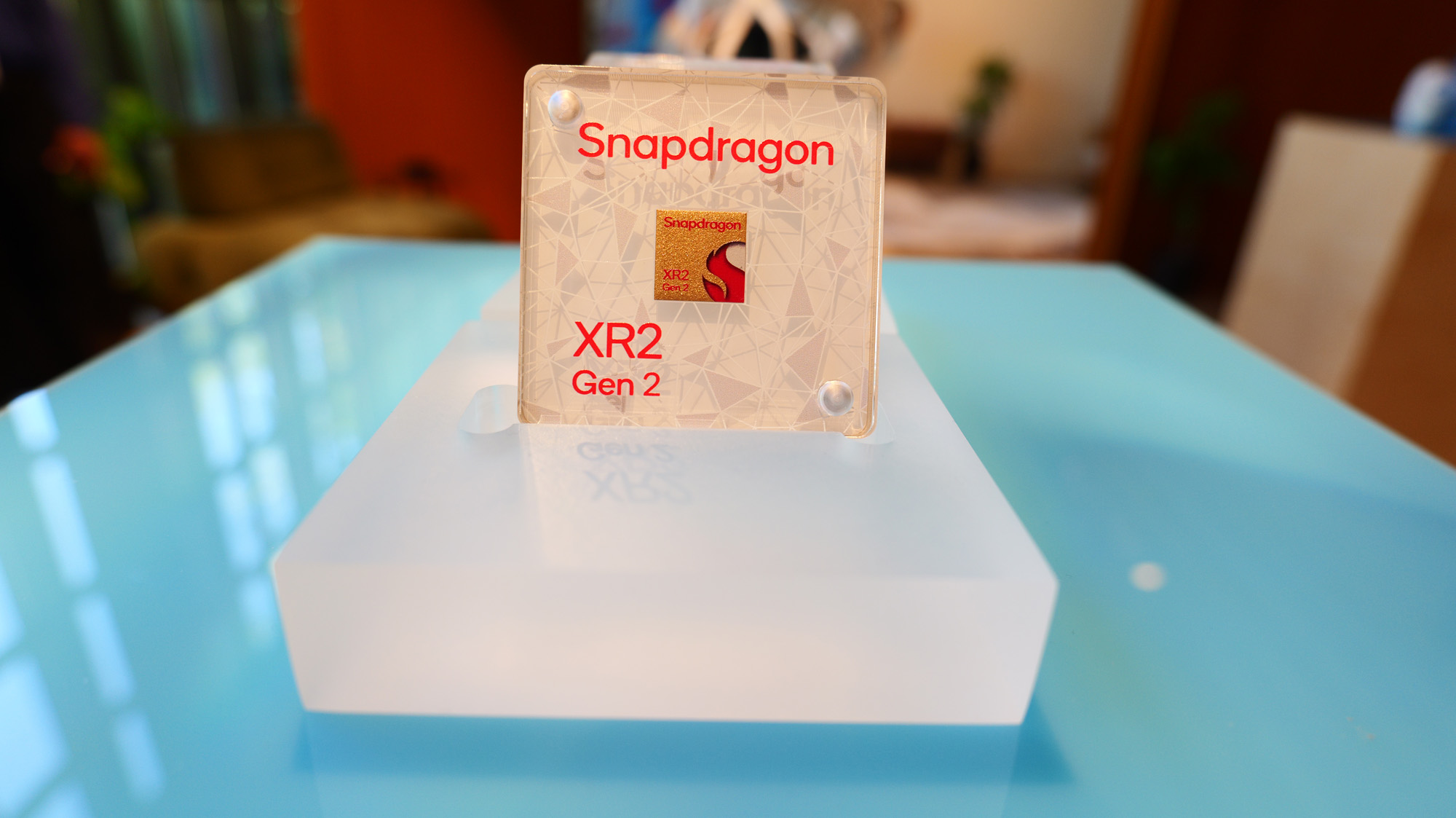
In terms of refresh rate, the Quest 3 has a range of 72-120Hz, however, the latter figure is still listed as experimental. The Quest 2 and Pro boast 72Hz, 72-90Hz, respectively. Field of View (FOV) has also gotten a bump to 110 degrees horizontal and 96 degrees vertical which is about 15% wider than the Quest 2.
So let’s talk sensors. The Quest 3 has six advanced camera sensors that power high-resolution color mixed reality and wireless inside-out SLAM (simultaneous localization and mapping) tracking with six degrees of freedom. The pair RGB cameras have 18 ppd (pixel per degree) bringing “full-color, high-fidelity views of your surroundings while you see virtual objects appear in your physical space.”

That meant when passthrough was activated I got an accurate view of the outside world, including the royal blue shirt my colleague wore. And details were so sharp I could easily read an incoming message on my Pixel Watch. It’s about as clear and vivid as the Apple Vision Pro’s passthrough, however, the Quest 3 lacks the adjustable immersion feature that lets you control how much of the real world you let in.
The unit has 10x more pixels in Passthrough compared to Quest 2 and 3x more pixels than the Quest Pro. There’s also a depth projector which aids with room mapping so you can move throughout your space and interact with virtual characters or objects in the room around you.
Meta Quest 3 Audio
You can experience audio in two ways, the headset jack and the integrated speakers. I’ve tried connecting several pairs of headphones and earbuds to no avail. I’m checking in with Meta to see if this feature will be added later. But for now, let’s talk about what we do have. I dug out the audio cable included with my Sony WH-1000XM5 headphones and took them for a spin with the Quest 3. As per usual, the WH-1000XM5s delivered a pristine audio experience. However, it was sort of distracting to have both the headset and the headphones on.
I preferred relying on the Quest 3’s integrated speaker. They aren’t as crisp as my Sonys, but they were clear enough that I heard every chord and drum beat on “Numb/Encore,” the team up between Linkin Park and Jay-Z in Beat Saber. And when I bravely (or foolishly) decided to play Resident Evil 4, the heavy breathing of the Genado-infected villagers was disconcerting. It’s one of the few times the spatial audio was too much, in a good way.
Meta Quest 3 Mixed Reality
So what’s it like in mixed reality? It's pretty cool, if you have the right apps to show it off. And for right now, as much as Meta and Apple want MR to become a productivity tool, the technology shines best with gaming or entertainment apps.
In order to acclimate yourself to the MR experience, I highly recommend taking First Encounters for a spin. Starting with an alien spaceship, your job is to capture some colorful tribble-looking aliens. As the game progresses, the real world starts seamlessly blending into the game world, with fuzzy invaders breaking through from their world to ours, setting you up to shoot and capture.
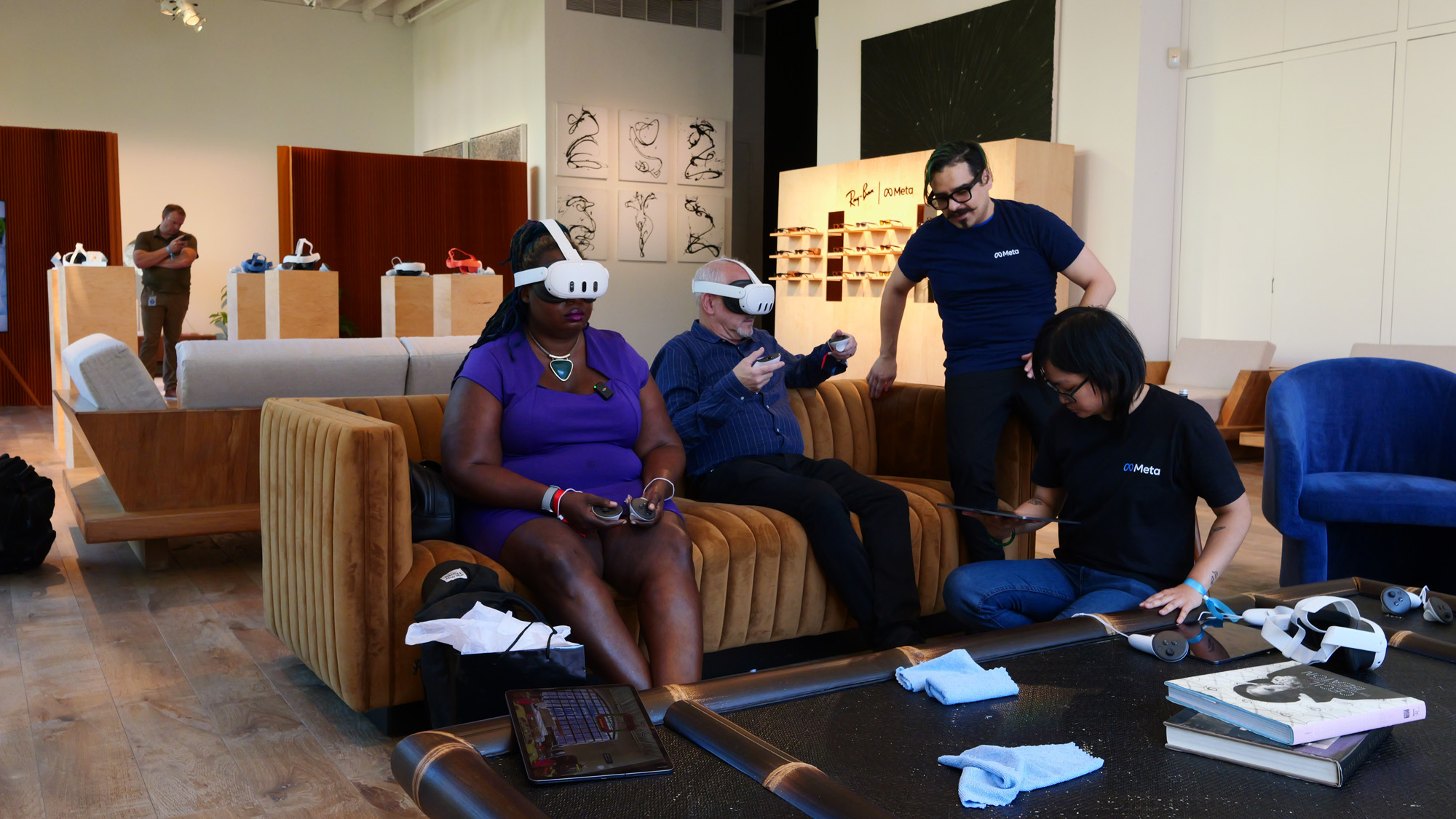
I went head-to-head against a Meta rep in a game where we were a pair of robots battling to maintain control of a crown until the time ran out. We battled in a large arena right in the center of the demo space. As I punched, shot rockets and lasers and even unleashed tornadoes in an effort to keep the crown, I could see my camera man recording everything in the real world. I watched as he began speaking with another Meta rep even as my robot avatar zipped around the arena.
The experience was smooth and engaging and even though it took place in the real world, the virtual one seamlessly coexisted. It was weird, but familiar.
If you’re looking for a more traditional virtual reality experience, you can still access all the games and apps from the Quest 2 library, which at the time of this writing is over 500 titles. Plus, there’s 100 new and upgraded titles coming this year.
And if you’re wondering just how much better the Quest 3 is than the 2, I can say there is a noticeable difference. I saw the Snapdragon XR2 Gen 2 platform first hand during the Red Matter 2 demo where I quickly shifted between the Quest 2 version and the Quest 3. Textures were definitely sharper in the latter with little to no latency or image artifacts.
Meta Quest 3 battery life
If you were hoping for a battery boost for the Meta Quest 3, I'm sorry to disappoint you. The new headset is rated for the same battery life as the Quest 2, about 2.5 hours. This, however, can vary depending on what you’re using the headset for. So if you’re just watching media, Meta has the headset rated for 2.9 hours while gaming drops it to 2.4 hours and straight productivity is an estimated 2.5 hours.
I got 2.5 hours doing a mix of gaming, watching NBA games via Xtadium: Courtside, Multi Screen NBA and exploring Meta Horizons.
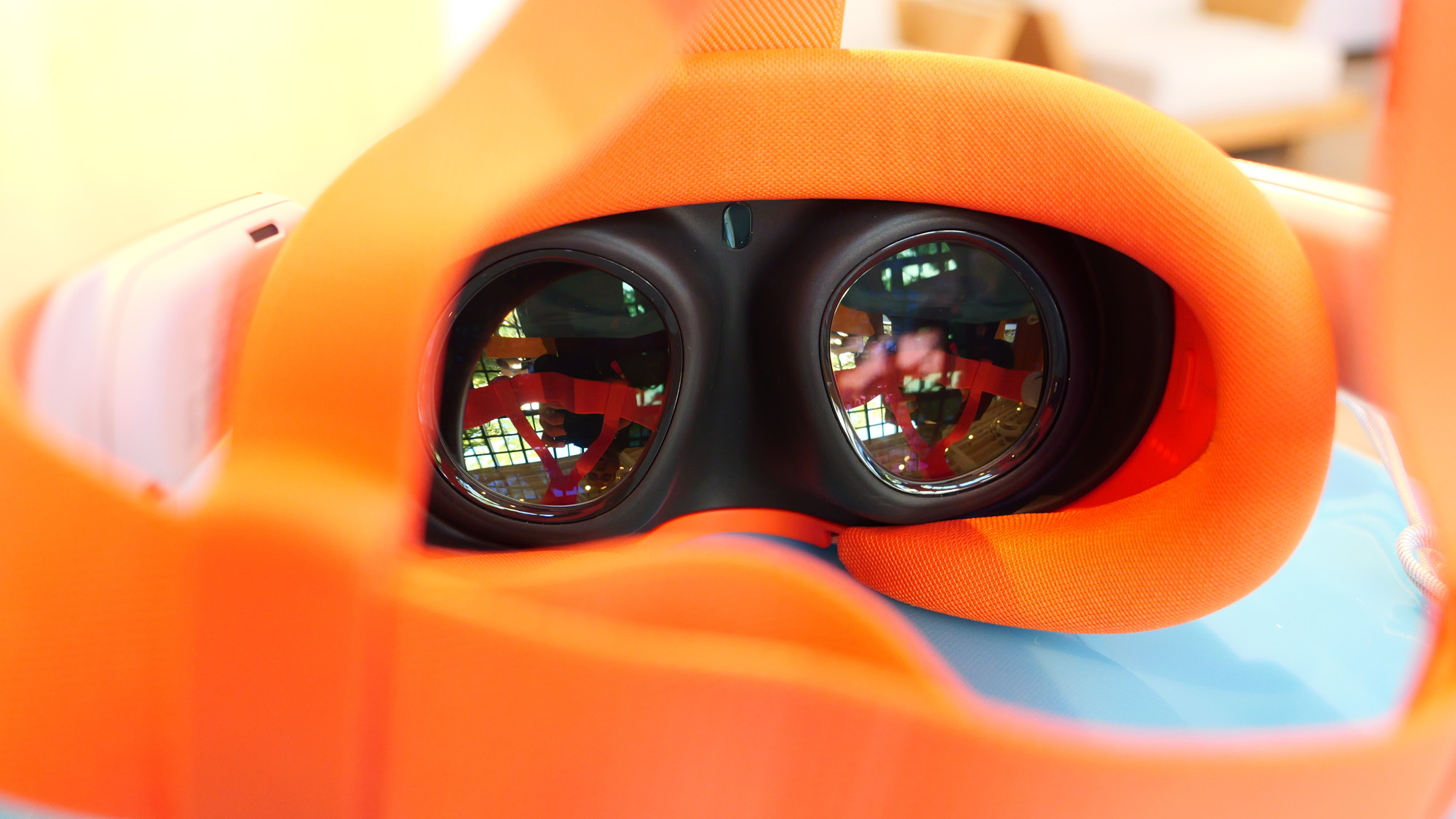
It will take approximately two hours to get the unit fully charged from a 0% battery. If you want a longer experience, you’ll have to invest in the Elite Strap with Battery which will cost you $129, but adds another two hours to the Quest 3’s overall battery life.
Conclusion
After taking some serious blows to the wallet, Meta came to its senses and gave the people what we want –– an affordable VR/MR headset. Am I happy about the $200 price hike? No, especially knowing the Quest 2 only costs $299. However, considering everything that you’re getting with the Quest 3, I can excuse the more expensive price tag. Almost.
For the money, you’re getting a slimmed down Quest Pro, with a more powerful chipset, better lenses and improved haptics. That translates into seamless VR and MR experiences with crisp graphics with little to no lag, no screen door effect and full-color passthrough. However, I really wish Meta found a way to extend the battery life.
Still, the Meta Quest 3 is a great follow up device. It brings sharper graphics, excellent sound and a stacked catalog. It's much cheaper than the Quest Pro and the upcoming Apple Vision Pro. In fact, you can buy seven Quest 3s for the price of one Vision Pro and a pair for one Quest Pro. Overall, the Meta Quest 3 is a worthy, albeit more expensive successor to the Quest 2.

Sherri L. Smith has been cranking out product reviews for Laptopmag.com since 2011. In that time, she's reviewed more than her share of laptops, tablets, smartphones and everything in between. The resident gamer and audio junkie, Sherri was previously a managing editor for Black Web 2.0 and contributed to BET.Com and Popgadget.

